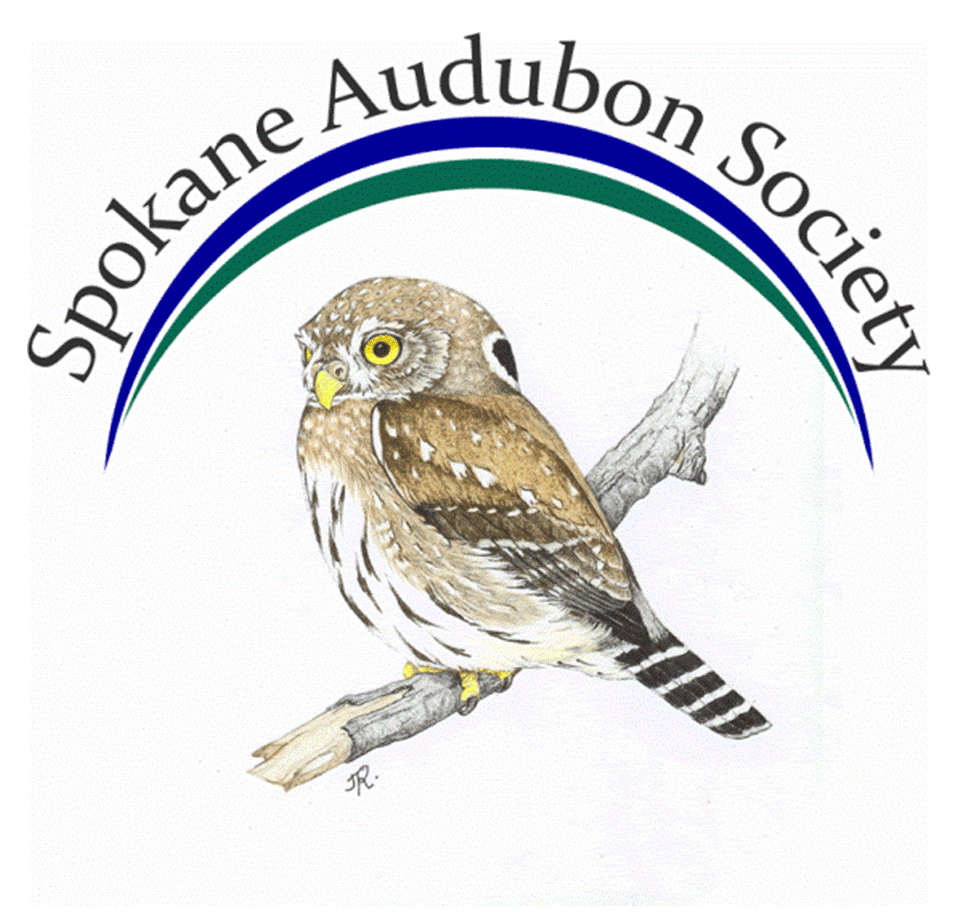Marlene and Bob out birding.
Bob and Marlene Cashen
by Madonna Luers
Recently you’ve heard a lot about the first moon landing in 1969 since 2019 was the 50th anniversary of that scientific milestone. But you probably didn’t know that Spokane Audubon board members Bob and Marlene Cashen were part of that National Aeronautics and Space Administration (NASA) project. In fact, along with meeting astronauts, that’s where they first met each other.
Bob was born in Richmond, Virginia in 1935, earned a civil engineering degree from University of Virginia, and was working for Boeing as a government sub-contractor planning equipment budgets for NASA’s new Apollo program. Marlene was born in New Orleans, Louisiana in 1946, earned a Soule Business College degree, and was working for Boeing as a secretary to Bob’s boss.
“I ended up working with Bob a lot,” Marlene said with a twinkle in her eye, “because no one else wanted to since he was such a stickler for details, such a perfectionist!”
They married in 1968 and worked in many other capacities in the New Orleans area. Bob was with Lockheed Martin, building the external tank for the reusable space shuttle, and at the end of his career was an environmental manager cleaning up 50 years of chemical spills and leaks at NASA’s Michoud Assembly Facility. Marlene became a criminal district court reporter and later took depositions for the Louisiana Board of Pharmacy hearings; with national certification and having acquired Washington certification, she continued deposition freelancing for another six years after they moved to Spokane in 2006.
The Cashens started feeding birds in their backyard in Metairie, a suburb of New Orleans. Marlene says her Dad always had bird feeders in the yard when she was growing up, and though he didn’t know the species’ names, just his “redbirds” and “bluebirds,” she and Bob soon learned about cardinals, blue jays, mockingbirds and more, even great egrets that would feed on their backyard Anole lizards.
When they moved to Slidell, another New Orleans suburb, they bordered a wetland and learned about snags, even placing some in their yard to attract red-headed and red-bellied woodpeckers. There they also enjoyed buff-bellied, ruby-throated, broad-tailed, and black-chinned hummingbirds, and helped a fellow local birding club member band some of them.
Blue Jay (Marlene’s favorite bird). Photo by Marlene.
They traveled around the south to birdwatch, enjoyed seeing unique species on trips to Costa Rica and Panama, and specifically made a guided trip to the Galapagos Islands to see blue-footed and Nazca boobies, albatrosses, Galapagos hawks, Galapagos penguins, and much more.
Northern Mockingbird (Bob’s favorite bird). Photo by Bob.
When Hurricane Katrina struck in 2005, it didn’t damage their home near the wetland, but it devastated all their favorite birding areas with saltwater intrusion. They lived without electric power for nearly a month and felt like they were in a third world country during wartime. Graveyard coffins floated in ditches, boats were deposited on roads by a massive tidal wave, and everyone was armed to ward off looting. They didn’t want to spend retirement in an area that would take years to recover and would likely see similar problems again. Marlene’s sister in Seattle suggested Spokane for their new home, so they took a leap of faith.
Within a year of moving to Spokane they joined the Spokane Audubon chapter to learn about local birds from others. They also joined the Spokane Camera Club since both enjoy photography, and many of their beautiful bird photos have graced the pages of our annual calendar. The Cashens like to bird slow, watching behavior, letting birds come to them, rather than rushing from point to point to check off species. Marlene once stood on the Liberty Lake boardwalk for 45 minutes to get photos of a Virginia rail that ended up nearly running into her. They believe that habitat protection and public access are the most important issue for birds and the future of birding. Development of open space and wild areas concerns them. By 2011, Bob was voted to the chapter board of directors, “despite being a conservative southerner,” he says with a wink. A couple of years later, Marlene was asked to join the board, too. They both look at their board roles as community service and want to help the chapter be more inclusive by providing opportunities for others to learn more about birds.
“You can study birds in books,” Bob said, “but you need a relationship with superior birders to really learn to identify species by sight and sound.”



